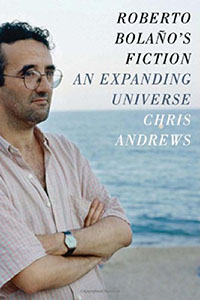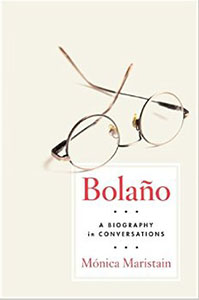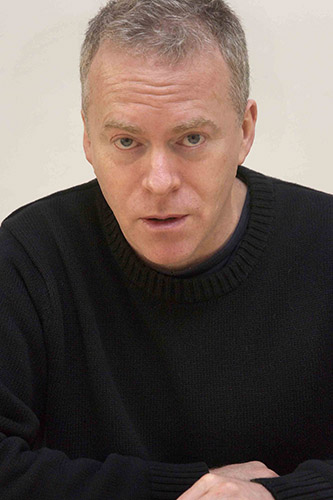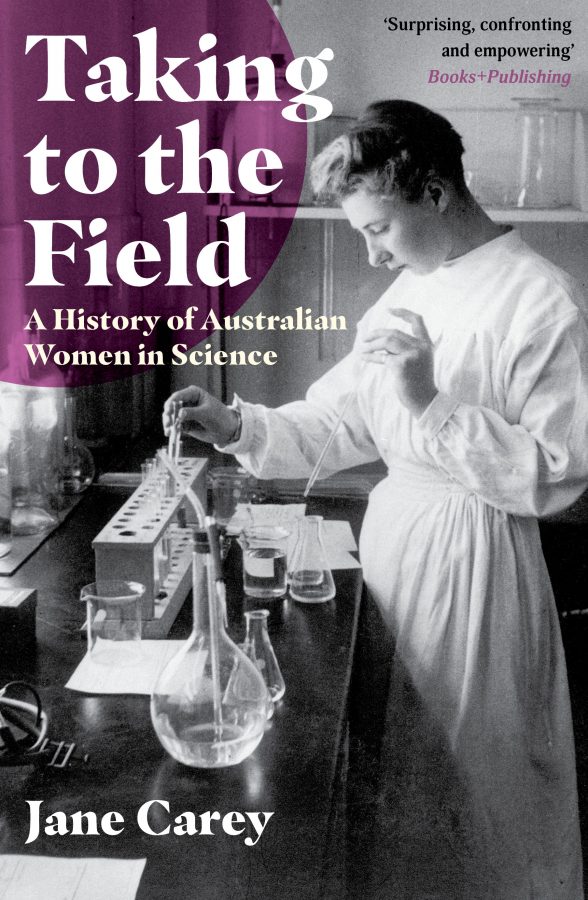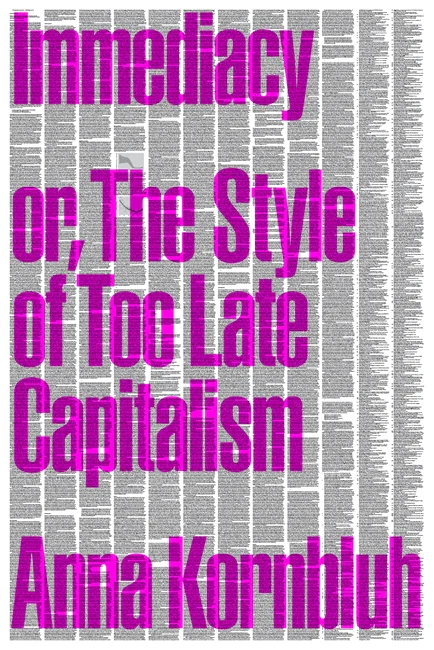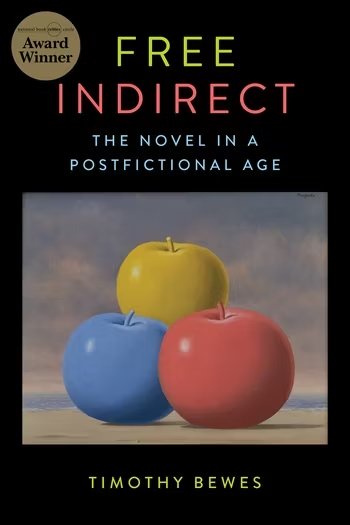Bolaño-esque, Bolaño-ized, little Bolaños: eleven years after his death, the fanaticism Roberto Bolaño’s work has inspired is evident in neologisms that suggest a literary universe remade in his image. The praise for his work has been ecstatic, and almost universal. It has consistently referred to epochal significance and a decisive, generational shift in the field of Latin American literature (evident in the number of reviews and essays that include the phrase ‘not since Gabriel García Márquez’, or something similar). The enthusiasm, which has been hard to contain, also has a touch of fan-based craziness to it. Bolaño’s dedicated readers, who seem to be everywhere these days, though perhaps not in plain sight, often come across like the slightly unhinged characters in his fiction, the sort of people who might pursue an obscure, avant-garde poet into the Sonoran Desert, for instance. This sense of art and life slipping into each other is a big part of Bolaño’s appeal. As Jonathan Galassi put it in Farrar, Straus and Giroux’s advance publicity for the English translation of The Savage Detectives (2007), the novel is
about us in a way that very few novels dare to be. By ‘us’ I mean writers, editors, booksellers, critics, teenage poets — in a word, readers: those of us who cling, sometimes absurdly, to the idea of literature as an excuse for our daily lives, as a last connection to something bigger than ourselves.
This sense of somehow finding ourselves in Bolaño’s writing is partly what accounts for the fervour with which it is read by people committed to the idea that literature is something more than a form of distraction or entertainment. In Bolaño’s work, literature is a way of being in the world, and it is the only one that really seems to matter. But that is not to say that his perspective is insular. Bolaño’s world is also one of political violence and dislocation that swirls like a vortex around a final, undiscoverable secret, a black hole, a hidden centre that anticipates an apocalyptic future already at work in the present. Despite his persistent focus on writers and writing, there is something massively expansive about his work: ‘cosmic’ is the word Rodrigo Fresán used, and it seems appropriate to the ambition and the radically open-ended quality of Bolaño’s vision.
But of course a writer’s consecration is never simply about his or her work. There are always other things in play. In Bolaño’s case, the partly fictitious mythology around him — involving migration, arrest, exile, lost teeth, Salvadoran guerrillas and avant-garde rabble-rousing — is almost as intoxicating as his writing, out of which it seems to grow. The idea of a Chilean who lived in Mexico City before moving to Spain jibes with the current faddishness around denationalized cultural formations, but there is also the aggressiveness with which Bolaño engaged with other Latin American writers and, at least in the US, a superbly orchestrated marketing campaign that has drawn on all of these strands. As Galassi’s plug for The Savage Detectives indicates, the celebration of Bolaño’s obsessive, quixotic investment in the experience of literature is now being orchestrated by some of the most powerful publishers on the planet.
Wherever one chooses to lay the emphasis, there is no concise explanation of the phenomenon that Bolaño has become. Enough people have tried to find one, however, that the topic already feels a bit exhausted. As the Catalan critic Ignacio Echevarría puts it in one of the interviews assembled in Mónica Maristain’s Bolaño: A Biography in Conversations: ‘It’s getting increasingly difficult to say something original or new about Roberto.’ At the same time though, it’s perfectly clear that, as the Chilean writer Alejandro Zambra says in the same book, ‘we will be reading and rereading him for several decades with the same excitement’.
The simultaneous sense of fascination and fatigue speaks to the different registers in which Bolaño’s work circulates, and the different constituencies that are implicated in it. Bolaño has been rapidly commercialised and canonised. One can well imagine that the marketing people at New Directions, which has published fourteen Bolaño titles in as many years, must be sick of the sound of his name by now. But maybe not. Maybe those responsible for the sale of his books also understand, like Jonathan Galassi, that his work continues to emit something that defies its currency, unsettles it or even displaces it altogether. At the conclusion of Roberto Bolaño’s Fiction: An Expanding Universe, Chris Andrews captures the tension between the public articulation of Bolaño’s now canonical status and the almost inexhaustible fascination he provokes. Admitting that his own book of criticism is participating in the ‘process of monumentalization’ that has been going on around Bolaño virtually since his death, Andrews also reminds us of the ‘incalculably diffusive’ effects of Bolaño’s work — effects that ‘leave no public trace and do not accumulate in any obvious way’, but that are nevertheless at the centre of Bolaño’s appeal and relevance.
A lot of Bolaño’s work, of course, is either about processes of literary monumentalisation, or their conspicuous absence. His universe of littérateurs (in The Savage Detectives, say) forms its own sort of monument to the unknown poets of a lost avant-garde. The story of Benno von Archimboldi’s canonisation in 2666 (2008) feels, at times, like an uncanny reflection of how Bolaño himself has been monumentalised by publishers, academics and prize committees. But often the very possibility of monumentalisation also evokes the sort of diffusive affectivity Andrews might have had in mind. This is one of the persistent tensions in Bolaño’s work: literary culture has something inherently agonistic about it, but it also opens out onto something vast and sometimes terrifying that dwarfs literature itself. ‘In four million years the worst writer in Chile will have disappeared, but so will Shakespeare, so will Cervantes,’ Bolaño said on Chilean television in 1998. ‘We’re all condemned to oblivion, not just a physical disappearance, but a total one.’
This sense of oblivion haunts Bolaño’s work. It is as if his writing is constantly opening up onto another, hidden dimension against which our own experience becomes unrecognisable. That the latter years of his life were dogged by the liver condition that would kill him at the age of 50, as he waited for a transplant, might partly explain this. As Rodrigo Fresán says in Maristain’s book, Bolaño suspected that he had already died during an earlier liver attack and that ‘everything that had happened to him in the subsequent ten years was the life that he hadn’t been able to experience in reality’.
It is against this backdrop of mutability and the surreal sense of having somehow survived oneself that the ‘incalculably diffusive’ effects of Bolaño’s fiction might be felt. Take the final scene in Distant Star (2004). After the first-person narrator and the Chilean detective Abel Romero have tracked down the serial killer-cum-poet Carlos Wieder — whom Romero has presumably killed in turn — we find the two of them on a curbside in Barcelona, talking over what has just occured, while Romero is trying to hail a taxi:
Nothing like this has ever happened to me, I confessed. That’s not true, said Romero very gently. Worse things have happened to us, think about it. You could be right, I admitted, but this really has been a dreadful business. Dreadful, repeated Romero, as if he were savouring the word. Then he laughed quietly, grinning like a rabbit, and said, Well what else could it have been? I wasn’t in a laughing mood, but I laughed all the same. Romero looked at the sky, the lighted windows, the car headlights, the neon signs, and he seemed small and tired. Soon, I guessed, he would be sixty. And I had already passed forty. A taxi pulled up beside us. Look after yourself, my friend, he said, and off he went.
That the narrator has already turned 40 reminds us that, in the course of a novel barely 150 pages long, more than twenty years have elapsed. In that time an entire generation, with its youthful enthusiasm for art and politics, its friendships, its sexual fixations, and its dreams of a better world, has passed away. The curtness of Romero’s departure also reframes the action of the novel (which has involved an encounter with an absolute and uncompromising kind of evil) as a small, ephemeral moment potentially swallowed by the vastness of time and space (the sky, headlights, neon). As in so many of Bolaño’s scenarios, we know, or suspect, that the narrator will never see Romero again, and yet when Romero calls the narrator his friend, the word seems to shimmer with a meaning that holds off, if only for a moment, the sense of mutability that is lingering in the background.
I find this intensely affecting. The moment is melancholic without being maudlin. It is also so low key that it borders on banality. And yet it is as if we can glimpse something — the passing of time, the ebbing of lives — pressing against the threshold of the everyday. Elsewhere in Bolaño’s work, this sense of oblivion is more apocalyptic, as in the allegorical Amulet (2007) when Auxilio Lacouture sees a dust cloud billowing through the streets of Mexico City. The dust settles over the ‘books I had read and those I was planning to read’. Her ‘heroic’ efforts ‘with broom and rag’ are ultimately in vain: ‘dust and literature have always gone together’. The city seems like a premonition of its end. Avenida Guerrero in the dead of night is ‘more like a cemetery than an avenue, not a cemetery in 1974 or in 1968, or in 1975, but a cemetery in the year 2666, a forgotten cemetery under the eyelid of a corpse’.
This haunting image points towards the capstone of Bolaño’s career, the cryptically titled 2666, in which the process of literary monumentalisation, carried out initially by four obsessed literary critics on the trail of the illusive German novelist Benno von Archimboldi, leads to the abyss of a distinctly hemispheric modernity (the horror of history, emblematised in the femicide associated with Ciudad Juárez on the US-Mexican border), but also to something that is clearly more metaphysical, what Chris Andrews suggests might be thought of as ‘the secret of evil’, which in Bolaño’s work is always intimated, but never directly revealed.
Chris Andrews deserves a lot of praise. He was Bolaño’s first English language translator. He got Harvill Press in the UK interested in the work at a time when few English speakers would have known who Bolaño was. He has translated virtually all of the books put out by New Directions, including three superb short novels: By Night in Chile (2003), Distant Star (2004) and Amulet. Before Farrar, Straus and Giroux and Andrew Wylie (who now represents the Bolaño estate in the US) were in the picture, it was Andrews’ dedication that brought much of Bolaño’s finest work to English-speaking readers. Along with Natasha Wimmer, the US-based translator of The Savage Detectives and 2666, he has a privileged place in the Bolaño universe (and a story dedicated to him). They might all be forgotten four million years from now, but I suspect Andrews’ translations will nevertheless outlast virtually every other Australian contribution to contemporary literature.
It is fitting, and probably a little bit daunting, that Andrews’ Roberto Bolaño’s Fiction: An Expanding Universe is the first monograph written in English about Bolaño’s work: fitting for obvious reasons, daunting because the book is going to be read by many of the those obsessives who have lived out the last decade or so accompanied by the incalculably diffusive effects of Bolaño’s fiction. It is hard to imagine a work of scholarship keeping these people happy. A few years ago Ilan Stavans, a professor of Spanish at Amherst College, seemed to want to warn academics off. ‘Bolaño’s work is rapidly becoming a factory for scholarly platitudes’, he wrote as he lamented a ‘plethora of tenure-granting studies’. It is true that there has been an explosion of journal articles on Bolaño, and the last few years have also seen the first wave of monographs in Spanish. It is to Andrews’ credit that he has been prepared to wade into what I am sure will be a contested field with a fair bit of backbiting, not unlike the feuding tribes of academics in the first part of 2666.
Andrews’ book is unembarrassed about its scholarly orientation, unawed by its subject, and has avoided giving in to the Bolaño-esque, which must have been tempting. Instead, it remains throughout a scrupulously measured account of the work. There are probably scholarly essays on Bolaño that pack a heavier theoretical or political punch, but what is attractive about the book is its lack of interest in theoretical fashionability and, correspondingly, its diligent mapping of both formal and thematic topoi. There are no ‘scholarly platitudes’ here, partly because the book’s ambitions are never overstated. They might even be described as self-effacing. If there is an arc to the book, it isn’t one bound up with chronology, as would often be the case with this sort of study. Instead it involves a methodological shift from narratology to moral philosophy. In the process, Andrews connects Bolaño’s stylistic innovations to something like the ethical vision that emerges (albeit ambiguously) from the novels.
A lot of this is terrifically insightful and will supply a template for further work, which is what I imagine it was intended to do. Andrews begins with an account of Bolaño’s reception and offers some interesting explanations for it – translatability, for instance – but reception is really a marginal concern. The strength of the early part of the book resides in its patient account of formal processes and strategies. There is an attempt to get at the technical minutiae of how Bolaño invents his worlds. This will be as interesting to readers of Bolaño as it will be to students of creative writing. Andrews refers to Bolaño’s ‘fiction-making system’, a phrase which perhaps suggests a proximity to the writing workshop. Through some nicely detailed readings, of short stories especially, Andrews explains the way in which Bolaño expands upon his own inventiveness, recirculates characters, constructs fictional texts nested within texts – what Andrews calls ‘metarepresentation’ – and develops forms of characterisation that hinge on a plausible but obsessive relationship to the circumstances of the everyday. Andrews calls this ‘overinterpretation’. The ability to generate a set of terms that explain ‘writerly processes’ is the book’s strength. Andrews has set out to identify categories and techniques in order to supply a kind of formal road map.
By the fourth chapter, the narratological gist has begun to segue into a discussion of the ethical valences of various kinds of characterisation, or of what Andrews calls ‘narrative identity’. He juxtaposes two modes of narrative identity that seem particularly apparent in Bolaño’s work: diachronic, which involves continuity and coherent development through time, and episodic, which involves fragmentation and dislocation. As at other moments in the book, the key terms emerge out of fairly involved and slightly digressive departures into branches of moral philosophy and narrative theory. At the same time, the question of what role political history might play in the constitution of different forms of narrative identity is only fleetingly touched upon, even though it is clearly central to Bolaño’s evocations of the relationship between dictatorship and dislocation.
The later part of the book is more directly thematic, and fairly squarely focused on trying to extract ethical lessons from the ways in which fictional characters behave. The categorizing impulse is still evident. There is a nice account of Bolaño’s vision of evil, organised around four character types (the accomplice, the dictator, the administrator and the sociopath); a fascinating, if inconclusive, set of speculations on Bolaño’s relationship to Borges; discussions of heroism and courage; and finally what Andrews calls the ‘neotenic openness’ to possibility, bound up with the investment in youth, poetry and the literary life that perhaps remains the most enduring feature of Bolaño’s vision.
At stake here is the sense of a cultivated immaturity: ‘the neotenic openness for which poetry stands in Bolaño’s fiction is a quality maintained by persistence, by resisting social pressure to move on, “grow up,” and espouse an assigned condition’. Many of Bolaño’s greatest characters fit this mould. It is also the disposition we seem to slip into when we read his work. Oblivion might be looming, and we all might be stumbling on the edge of the abyss, but it is hard not to feel rejuvenated by a world of tequila drinking poets who embark on absurd quests, who starve for their art, or who maintain a dignified, even heroic, commitment in the face of obscurity. Bolaño’s work offers aesthetic experience itself as a sort of cultivated immaturity, at least in so far as it involves a refusal or suspension of the factual, everyday world. Virtually the entirety of his oeuvre is a melancholic monument to this form of idealism. The tendency to get rhapsodic about it is what Andrews, probably wisely, resists.
The rigour of Andrews’ book is in stark contrast to Mónica Maristain’s deliberately impressionistic Bolaño: A Biography in Conversations. Like Andrews’ book, however, its translation also delivers the first book in English of its kind. Maristain, a Mexican journalist already known for conducting Bolaño’s last interview, published in Mexican Playboy, has orchestrated a diverse set of voices in an attempt to approximate something like a book-length biography. I say ‘approximate’ because, as she is well aware, the material one would need to produce a conventional biography – Bolaño’s apparently prolific correspondence, for instance – is not currently available. What we have instead is a genuinely Bolaño-esque tribute, a set of reminiscences and meditations, which at times feel a bit like the descriptions of Arturo Belano and Ulises Lima that compose the bulk of The Savage Detectives.
Many of the interviews here are conducted by Maristain and published for the first time, but she has also drawn liberally on interviews that are already a matter of public record. It is a slightly strange undertaking. The book is part of the current tendency towards hagiography. It also has an element of self-conscious necromancy: ‘my project here has been to make some attempt to bring him back’, Maristain writes. And yet a number of the most powerful voices in the book speak out, vehemently, against the death-cult that they suspect is driving a lot of the posthumous interest in Bolaño’s work. The interview with the Mexican novelist Carmen Boullosa is particularly striking in this respect. It is as if Bolaño’s posthumous reception and celebration recreates for her the trauma of his passing.
Then came the fame and the Bolaño phenomenon, which I think has a painful side to it, revealing the cruelty of literature. If Bolaño hadn’t died, the phenomenon wouldn’t have been so large. The readers and critics who build up literary figures like the concept of an author who dies young, the idea of sacrifice, the romantic death, if you like. The truth is that it upsets me greatly. It upsets me because I knew Roberto, because he was a very dear friend to me and I don’t at all like the idea of him being dead, so I can’t be comfortable with the culture of cadaver eaters.
The quotation indicates the sort of intimacy that is often at stake in the interviews Maristain has conducted. It is an intimacy at odds with the public, and especially the North American, reception of Bolaño, with its biographical errors and its dubious glamorisation of the bohemian writer drifting beyond its borders. As in Stavans’s annoyance at ‘scholarly platitudes’ and ‘tenure-granting studies’, there is a tendency to want to speak about Bolaño by marginalising a range of compromised perspectives. It was apparently for this reason, we learn, that Carlos Fuentes, unable to displace the death cult around Bolaño, refused to include him in The Great Latin American Novel (2011):
I haven’t read him yet because I sense that a sort of funerary homage still lingers around him … I can still see the funeral wreaths everywhere, I can’t avoid them and I’d rather see Bolaño as a living writer.
This unease at the relationship between celebration and elegisation is not the only disquiet that crackles through Maristain’s book. In fact, there is a lot of fractiousness and a clear sense that the Bolaño narrative is being contested in all sorts of ways. Some of this discord belongs in the realm of institutional literary history. How important, for instance, was the Sevilla conference in 2003 to Bolaño and his canonisation? Ignacio Echevarría and Jorge Volpi offer bitterly opposed accounts of this: acolytes ‘cheeping next to the master’ while Bolaño laughed at them, according to Echevarría; the ‘canonization of Bolaño by my generation’, according to Volpi. But tension also emerges from Bolaño’s private relationships as well. How has the friction between Bolaño’s wife Carolina Lopez and Carmen Pérez de Vega, his partner at his death, complicated the management of his estate? Maristain alludes to this sort of thing, albeit tactfully. A respect for the concerned parties keeps her well clear of controversy. A sense of conflict might be implicit, but it never really reaches the surface of the text.
The same cannot be said of Bolaño’s antagonistic comments about other writers. ‘He bad-mouthed everyone,’ Isabel Allende insisted in a 2003 interview with El País:
He never had a good word for anyone. The fact that he’s dead doesn’t, in my opinion, make him a better writer. He was a very unpleasant person.
Allende was partly responding to the directness with which Bolaño dismissed her work: ‘I think that she is a bad writer, plain and simple,’ he said in a 2002 interview:
To call her a writer is to do her too much credit. I don’t even think Isabel Allende is a writer, she’s an escribidora.
This term escribidora (scribbler) suggests a kind of writer compromised by the ‘hit parade’; one who has prioritised a market-oriented pragmatism over aesthetic risk taking. With this sort of comment Bolaño positioned himself as a dissident who rejected a certain vision of literary commerce and ‘as a poet who reflects melancholically on the avant-garde’, as Echarvarría puts it. It is this ‘neotenic’ hostility to respectability that makes Bolaño so irresistible. In an essay titled ‘The Myths of Cthulhu’, he wrote:
This is the age of the writer as civil servant, the writer as thug, the writer as gym rat, the writer who goes to Houston or the Mayo Clinic in New York for medical treatment. Vargas Llosa never gave a better lesson in literature than when he went jogging at the crack of dawn. And García Márquez never taught us more then when he welcomed the Pope in Havana, wearing patent leather boots.
As Carmen Boullosa puts it, ‘Bolaño is pissing on their territory, like a dog. It’s a dogfight over territory.’
Maristain’s book moves more of less chronologically. Readers who feel the need to delve into biographical detail will find a great deal here. Bolaño’s father Leon tells us a lot about Roberto’s early life. Various people from Bolaño’s infrarealist days, some of whom inspired characters in The Savage Detectives, evoke Bolaño in the Mexico City of the early 1970s. Carmen Pérez de Vega gives Maristain a detailed and harrowing account of his final 24 hours. And a range of younger Mexican and Chilean writers talk about his influence on their careers. There is a lot of love and a lot respect. And of course nostalgia. The undoubted highlight, though, is an interview with the Argentinian novelist Rodrigo Fresán, author of the brilliantly deranged trip into neo-Victorianism, Kensington Garden (2005). Fresán, who lives in Barcelona, was a close friend. When Maristain talks to him intimacy produces, above all else, comedy. She asks him, for instance, about Bolaño’s taste in music:
Well, he had horrible taste in music. Obviously he liked Johnny Cash and Bob Dylan but also some Mexican rock that he didn’t just sing to me but also mimicked the actions, doing the screams. He terrified me when he did that, he was scary. He looked like a psychopath who’d take out a knife and gut you there and then.
‘I laugh a lot when I speak to Fresán,’ Bolaño wrote. ‘We rarely mention death.’ Fresán recreates the comic verve of their camaraderie, and it is very funny. Kensington Garden’s interest in eternal youth, frozen time and psychotic fantasies of immutability could not have been lost on Bolaño. In 2666, a Spanish-speaking couple (the man is called Rodrigo) appear near the statue of Peter Pan in Kensington Garden and are quickly distracted by a snake. Bolaño’s vision of Mexico seems, in turn, to have seeped into the cinematic delirium of Fresán’s Mantra (2001), which includes some of Bolaño’s poetry. The relationship between the two writers, both of whom work on a cosmic scale, may well be the subject of future ‘tenure-granting studies’, but Fresán also deserves to be read in his own right. If one needs any further proof that great books don’t always find the readerships they deserve, look no further than Kensington Garden.
‘They made him into a statue very quickly’, Carmen Boullosa adds to her complaint about ‘cadaver eaters’. The comment suggests that monumentalisation is also morbidly compromised. Death is its condition of possibility. If the statue is supposed to be a gesture of commemoration, or memorialisation, pitted against oblivion, it is also a decisive step towards it. The inevitability of its subject falling out of human memory makes it a potent marker of mutability and, ultimately, of ruin.
In a terrifically surreal section of Amulet, Auxilio Lacouture’s prophecies scramble a contemporary sense of literary history in a way that suggests this sort of obsolescence. As the centuries unfold, writers are doomed to oblivion, called back into fashion, banished from libraries, deified, resurrected and reincarnated – James Joyce as a Chinese boy, Thomas Mann as an Ecuadorian pharmacist, Virginia Woolf as an Argentinian writer, and Alfonsina Storni as a cat or a sea-lion. Alejandra Pizarnik’s last reader dies in 2100, Max Jacob’s in 2059.
A statue of Nicanor Parra, however, will stand in a Chilean square in the year 2059. A statue of Octavia Paz shall stand in a Mexican square in the year 2020. A rather small statue of Ernesto Cardenal shall stand in a Nicaraguan square in the year 2018.
But all statues tumble eventually, by divine intervention or the power of dynamite, like the statue of Heine. So let us not place too much trust in statues.
The funereal absurdities of monuments to heroes also emerges in By Night in Chile, when the critic-cum-poet Sebastián Urrutia Lacroix contemplates a near delirious vision of literary heroism and immortality, which involves Ernst Jünger crashing a spaceship into the Andes, where ‘the immaculate body of the hero among the wreckage would be preserved by the everlasting snows’. In response to this, the critic Farewell tells him the story of Heroes’ Hill, or Heldenberg. A successful shoemaker living in the Hapsburg empire, frustrated perhaps by the humdrum nature of his profession, decides to pour his wealth into a ‘monument dedicated to the heroes of the Empire’, past, present and future. He imagines something that will serve as both a cemetery and museum, with life-sized statues and tombs. Years later, after the collapse of the empire and two world wars, bemused Soviet soldiers encounter what is left of the shoemaker’s dream:
they saw neither statues nor tombs but only desolation and neglect, until at the very top of the hill they discovered a crypt that looked like a safe, with a sealed door, which they proceeded to open. Inside the crypt, sitting on a grand stone seat, they found the shoemaker’s body, his eye-sockets empty as if he were never to contemplate anything but the valley spread out below Heroes’ Hill and his jaw hanging open, as if he were still laughing after having glimpsed immortality.
Boullosa’s comment about the statue was, of course, figurative. I don’t think there are statues of Bolaño just yet. And if they come they probably won’t have any of the death’s-head imagery appropriate to a Bolaño-esque vision of immortality (though who knows). The city of Gerona, where Bolaño lived in the early 1980s, has, however, named a street after him: Calle Roberto Bolaño. In Bolaño: A Biography in Conversations, Maristain asks Rodrigo Fresán about this. His response is unaffected amusement:
when they build houses there, the most desirable address will be Roberto Bolaño 2666. I think that people will fight each other to live there. The street thing was great, it was fun, very Bolaño-esque. I think that one of Roberto’s traits, which remains after his death, is that, in the end, everything gets Bolaño-ized.
Fresán goes on to add that one of the hallmarks of a great writer is the ability to transform the world, to ‘irradiate or pollute’ it just a little bit. He’s not talking about writers as political activists or as agents in the formation of public opinion. Bolaño’s influence is more of the ‘incalculably diffusive’ kind that evades this obvious sort of accounting. And in that sense no one has irradiated or polluted like him for a very long time.
References
Roberto Bolaño, Amulet, translated by Chris Andrews (New Directions, 2006).
Roberto Bolaño, By Night in Chile, translated by Chris Andrews (New Directions, 2003).
Roberto Bolaño, Distant Star, translated by Chris Andrews (New Directions, 2004).
Roberto Bolaño, ‘The Myths of Cthulhu,’ The Insufferable Gaucho, translated by Chris Andrews (New Directions, 2010).
Rodrigo Fresán, Mantra (Mondadori, 2001).
Rodrigo Fresán, Kensington Garden, translated by Natasha Wimmer (Farrar, Straus and Giroux, 2005).
Ilan Stavans, ‘Roberto Bolaño’s Ascent,’ The Chronicle of Higher Education, 55.17 (19 December 2008).
